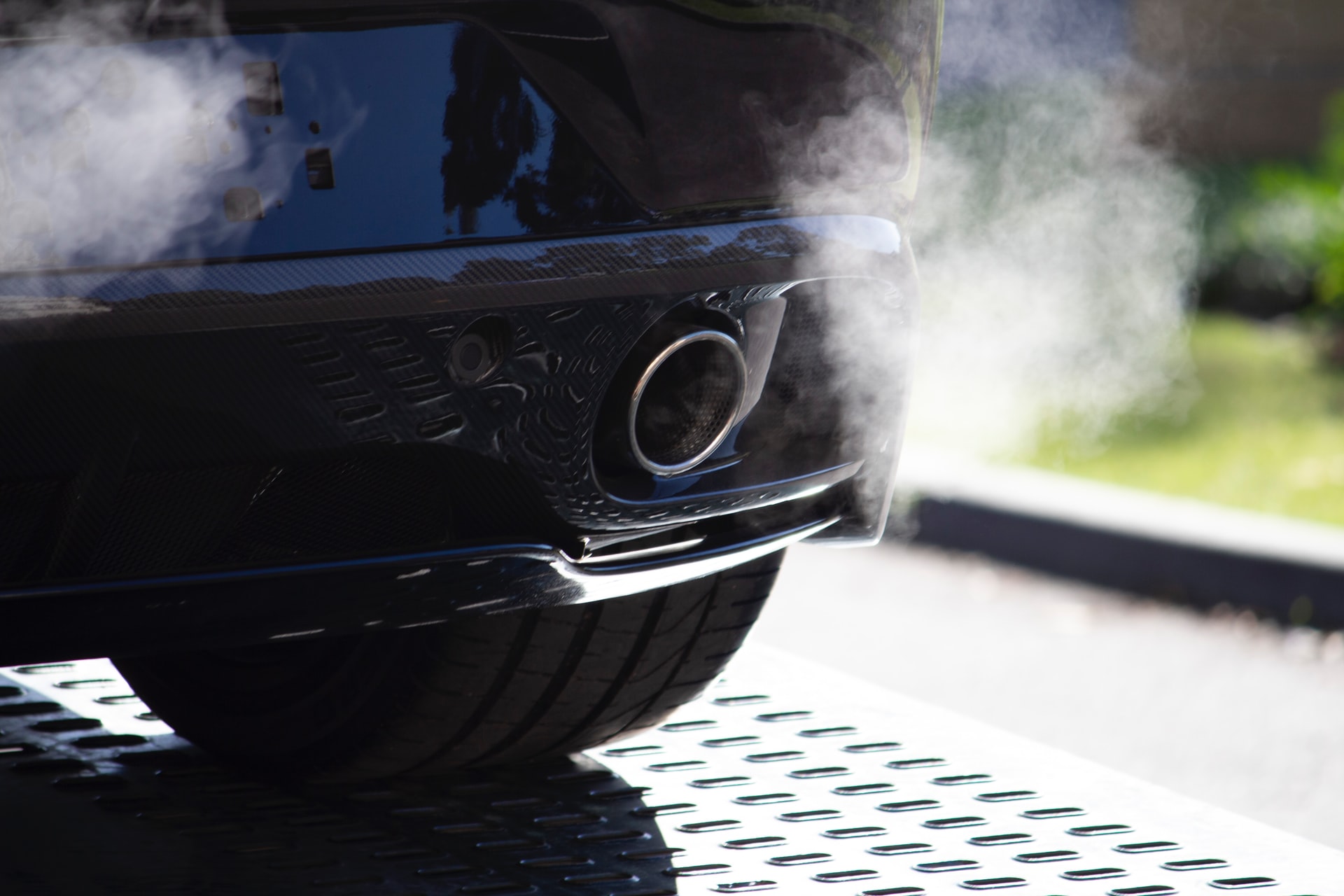Featured image: A car exhaust pipe, by Matt Boitor on Unsplash.
Paper: Microbial methane oxidation efficiency and robustness during lake overturn
Authors: M. Zimmerman, M. Mayr, H. Bürgmann, W. Eugster, T. Steinsberger, B. Wehrli, A. Brand, D. Bouffard
If you own a car, you’re likely aware that your engine emits greenhouse gases to the atmosphere. Although we usually think of cars and other human activities as the primary source of such greenhouse gases, living ecosystems can also produce these gases through natural processes. For example, lakes are an important global source of methane, a potent greenhouse gas produced in lake sediments as organic matter decomposes. In their recent paper, Zimmerman and colleagues focus on a small but mighty team of microbes that work hard to limit the amount of methane emitted from lakes.
Most cars contain a catalytic converter, which transforms some of the greenhouse gases produced by your engine into common, less harmful byproducts (such as water vapor) before they can be released through your car tailpipe. Lakes also contain their own catalytic converters in the form of tiny microbes living within the water. These microbes, called methanotrophs, convert methane into a less harmful greenhouse gas: carbon dioxide, which has a much weaker effect on climate change than methane.
Much like your car’s catalytic converter works the hardest during a cross-country road trip, methanotrophs often work overtime during the autumn season. Many lakes accumulate methane near the lake bottom over the course of the summer. The cooler weather in the fall triggers mixing throughout the lake. This lake-wide mixing transports accumulated methane upwards, which could potentially lead to a large emission of methane from the lake surface. However, Zimmerman and colleagues have now demonstrated that methanotrophs play a pivotal role in preventing a large release of methane during the fall mixing period. In a small Swiss lake, they discovered methanotrophs removed over 90% of the methane mixed upwards in autumn, therefore preventing a seasonal increase in emissions.

The team of researchers was also interested in how wind could influence the ability of these microbes to remove methane. Intense winds can facilitate faster lake-wide mixing, possibly giving methanotrophs less time to remove methane before it reaches the surface. The team modeled how different wind speeds and durations affect the methane emitted during autumn. Across wide-ranging wind scenarios, methanotrophs were highly efficient at removing more than 80% of methane mixed upwards during fall, even during short (12-hour) intense wind events. However, if strong winds lasted several days and/or coincided with rapid cooling, methane was mixed through the water column too fast for methanotrophs to keep up. In some of these intense wind scenarios, methanotrophs only removed 40% of the methane as it mixed upwards through the water column, resulting in larger methane emissions from the surface.
The important implications of these results are twofold. First, the authors argue that efficient methane removal during lake-wide mixing needs to be considered when constructing estimates of methane emissions from lakes globally. Neglecting to account for the powerful methane removal capacity of these tiny microbes may result in overestimating emissions from lake surfaces. Second, further studies examining how lake mixing will change under future climate scenarios can help us predict how methane emissions from these aquatic ecosystems may change in the future. Better estimates and predictions of methane release will enable us to improve our climate change mitigation efforts.
Methanotrophs: Nature’s catalytic converters by Sofia D’Ambrosio is licensed under a Creative Commons Attribution-ShareAlike 4.0 International License.

